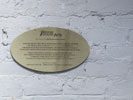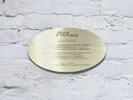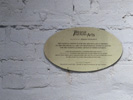General Guidelines
The Institute™: Or, What We Do for Love is an interdisciplinary project consisting of four main components: An installation, a web-site, related wall works and ‘Dreadful Songs’. These introduce the viewer to the National Institute for the Arts, a chain of artists’ residences situated in former hospital buildings across the country. A government re-training programming has prepared unemployed cultural bureaucrats for new careers as Institute™ staff members, where they now minister to the needs of the artist residents. The result is a classic ship-of-fools situation, a personal and professional cauldron in which the imperatives of two disenfranchised constituencies, the cultural sector and the health-care system, meet and raise questions.
Based on experience to date, The Institute™ project lends itself successfully to three general configurations: a small-scale, mid-scale, and full-scale version. The version a curator or gallery director selects will depend on available space, technical and personnel resources.
Each installation is adapted to its site, taking on something of that space’s “personality”. Depending on the scale chosen for the work, this can mean locating and integrating various items of furniture, décor, and other elements that originate from the host institution’s own milieu.
In designing a typical installation, visitor experience is the most important consideration. Availability of gallery staff for visitor assistance, desk and sale copies of the catalogue and other helpful printed information, careful balance of lighting and sound levels, and proper credits for any photographs used, all contribute to that experience. While The Institute™ installation and the on-site gallery crews work as a team to install the exhibition, the installation crew usually handles the computer stations, projectors, networking, and sound, while gallery staff organizes the hanging of wall works, and the acquisition and positioning of furniture, signage and props and the printing of support materials.
Good documentation is required, both with and without visitors, on completion of the installation.


